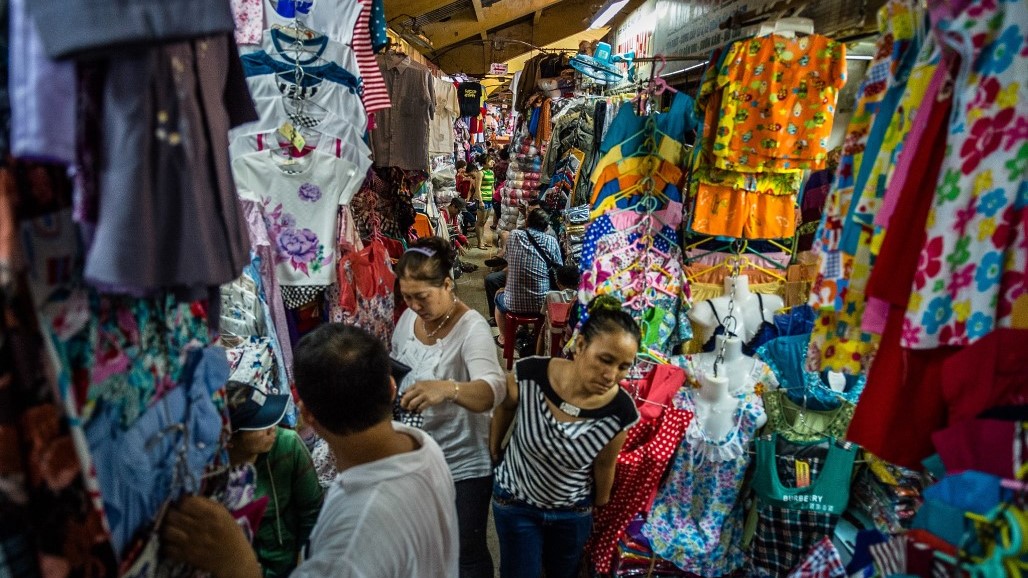
Small businesses suffered large income and capital losses during the pandemic. Photo credit: ADB.
A study of Southeast Asian businesses shows what not to do during a crisis.
Whether big or small, businesses struggled to cope with the impact of the coronavirus disease (COVID-19) pandemic. However, micro, small, and medium-sized enterprises (MSMEs) were the most affected, suffering large income and capital losses.
In Southeast Asia, many MSMEs shut down because of disease control measures. A year after the crisis, the business environment for MSMEs improved moderately, with some being able to resume operations.
According to a new Asian Development bank (ADB) report based on surveys, by March–April 2021, the share of MSMEs that were temporarily closed fell into single digits (4.8% in Indonesia, 1.1% in the Lao People’s Democratic Republic (Lao PDR), 6.3% in the Philippines, and 7.4% in Thailand). In the same period in 2020, half or more MSMEs suspended operations soon after the pandemic started due to mobility restrictions (48.6% of surveyed MSMEs in Indonesia, 61.1% in the Lao PDR), 70.6% in the Philippines, and 41.1% in Thailand).
Many MSMEs were able to reopen a year after the pandemic as surveyed economies began recovering, with growth projections of 1.6%–5.6% in 2021 from contractions of 0.5%–9.6% in 2020. However, many businesses continued to be hobbled by the crisis as they face limited demand. Many have limited resources and are highly informal with low levels of knowledge about government support and programs.
Here are some of the mistakes MSMEs made during the crisis and government policy responses to help them survive and become more competitive.
1. Going digital just for the sake of it
Going digital provided several benefits to MSMEs in the wake of the pandemic. It improved access to business information, strengthened business networks, created business opportunities (including access to global marketplaces and global supply chains), and reduced administrative costs.
But digitalization did not ensure profitability, according to the report.
In Indonesia, the share of those with a more than 6% income increase was likely higher in digitally operated MSMEs than nondigital MSMEs in August–September 2020. They were mainly small firms selling essential daily goods, food, and health-care products and delivering them. However, toward 2021, the share of those with no revenue or more than a 30% decrease in income likely increased among digitally operated MSMEs than nondigital MSMEs. Some of the reasons cited were limited demand for nonessential goods and services during social restrictions, weak business models and starting the enterprise without a business strategy, unfamiliarity with using technology for operations, and poor cost management during digitalization.
The report said MSMEs need comprehensive assistance for digitalization, including help with e-commerce development and online administrative and cost management. Given their limited use of digital financial services, any digitalization policy framework should be combined with promoting digital financial services that improve MSMEs’ internal cost management.
In a recent webinar on improving the MSME business environment, Ming Tan, founding executive director of think tank Tech for Good Institute, stressed going digital can be a game changer for MSMEs, particularly when it comes to widening their access to finance, improving operational efficiencies, and diversifying revenues. She said though countries need to improve connectivity and invest in infrastructure and capacity building. “The promise of the digital age will remain unrealized to most MSMEs if they don’t have electricity, transport, or digital access.”
2) Continuing to operate informally
One of the major downsides of operating informally or not registering a business is the lack of access to bank credit because one needs formal documentation to secure a loan. Businesses are forced to turn to informal lines of credit which have higher interest rates, putting many at risk of getting buried in debt.
A year into the pandemic, MSMEs’ dependence on informal financing remained high, although it has gradually reduced as access to bank credit expanded. MSMEs borrowing from banks increased to an average of 17% in March–April 2021 from 5% in March–April 2020 (12.2% from 1.0% in Indonesia, 21.3% from 7.6% in the Lao PDR, 10.0% from 4.8% in the Philippines, and 24.6% from 7.5% in Thailand).
Remaining in the informal sector also opens MSMEs to a lot of risks, Michael Schaper, senior visiting fellow at the Institute of Southeast Asian Studies in Singapore, said during the webinar. He said employees are also at risk because they do not have the same protection that workers of a registered firm have. “It's a risk for consumers and other businesses that trade with them because again it's hard to enforce contractual and other obligations to ensure certainty of the product or services being delivered. And it's a challenge for governments not only in terms of taxing and registering and monitoring, and policing them but also in terms of being able to communicate with them and in order to be able to help them grow further beyond where they are.”
3) Letting costs spiral out of control
The MSMEs surveyed continued to struggle to reduce costs a year into the pandemic.
During the webinar, Ramesh Subramaniam, director general of ADB’s Southeast Asia Department, noted how MSMEs have accumulated large debts in the wake of the pandemic. “The debt burden is quite heavy on them and the servicing needs that arise from these debts obviously pose an enormous burden on the enterprises.”
At the time the pandemic started in 2020, MSMEs quickly reduced the number of employees to save on operating costs. About 60% or more of those surveyed MSMEs pointed this out in Indonesia, 30% or more in the Lao PDR, 37% in the Philippines, and 39% in Thailand. In March–April 2021, the share of those reducing employees in a month was a quarter or less of MSMEs surveyed (8.5% in Indonesia, 22.3% in the Lao PDR, 16.9% in the Philippines, and 26.7% in Thailand).
The results suggest that better cost management is needed for MSMEs to survive, given the protracted pandemic and outbreaks of new COVID-19 variants. Digitalizing MSME operations and administration is a potential solution for smart cost reduction. Assistance should be provided to promote digitalization of MSMEs for improving cost control and marketing. For example, training programs and/or business development services on digitalization would benefit MSME owners and managers.
4) Failing to avail of government support programs
A lesson from the first rapid surveys suggested that a lack of information on these programs contributed to business pessimism among MSMEs. When businesses realized the importance of government support, MSME demand for assistance increased (from 2.3% in March–April 2020 to 9.7% in March–April 2021 in Indonesia, from 0.3% to 6.4% in the Lao PDR, from 5.7% to 6.9% in the Philippines, and from 2.0% to 2.8% in Thailand).
In the Lao PDR, because of work-from-home arrangements and increased electricity costs, MSMEs sought assistance to cover utility costs. In the Philippines, MSMEs asked for more information on available government assistance a year into the pandemic. In Thailand, subsidy/cash transfer/grants for business recovery (87.5%) remained at the top of MSMEs’ wish list, followed by tax relief/corporate tax reduction (83.1%) and assistance to pay salaries for employees (72.8%).
Given the high mobile phone penetration in countries surveyed, building a mobile information portal on government assistance programs would be worth considering.
This article was first published by BIMP-EAGA on 27 July 2022.

BIMP-EAGA
The Brunei Darussalam–Indonesia–Malaysia–Philippines East ASEAN Growth Area, or BIMP-EAGA, is a cooperation initiative established in 1994 to spur development in remote and less developed areas in the four participating Southeast Asian countries.

